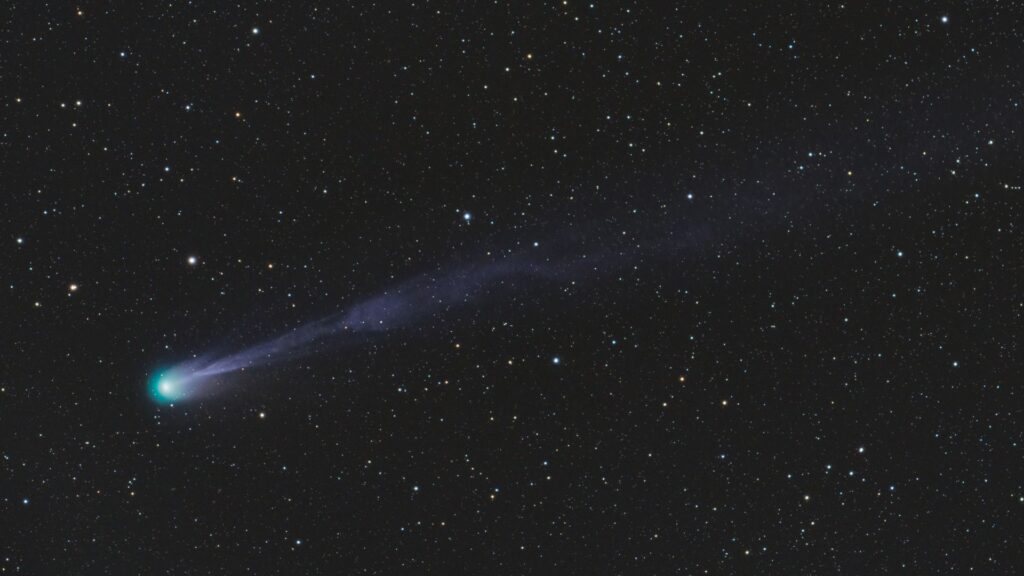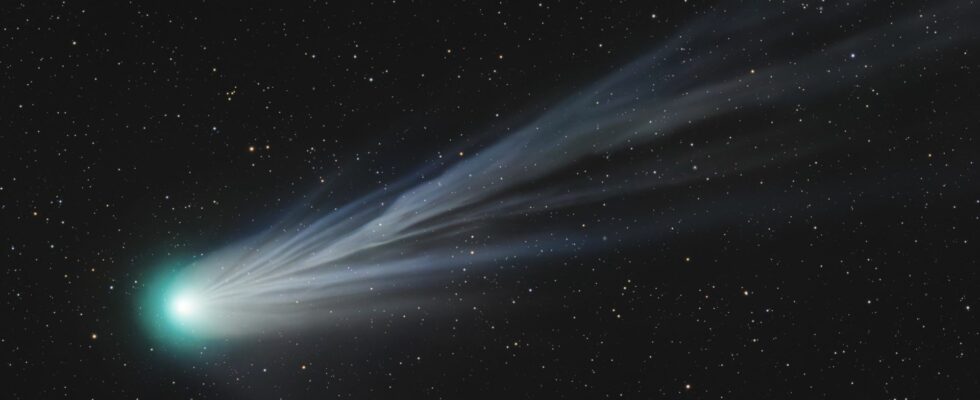Currently visible from Earth, comet 12P/Pons-Brook attracts the attention of amateur astronomers. But correctly observing this “devil’s comet” which passes every 71 years will not be so easy! Here’s how to do it.
Those who have particularly efficient telescopes have spotted it for almost a year now. From now on, almost everyone will be able to observe comet 12P/Pons-Brooks, nicknamed “the devil’s comet” because of the gas jets which form sort of horns around it. Its passage near the Earth only occurs every 71 years, so this is an opportunity not to be missed.
“ It is part of the Halley’s Comet family.specifies Nicolas Biver, astronomer at the Paris observatory, interviewed by Numerama. Their passing frequencies are comparable (76 years for Halley), and they come from the same region, the Oort cloud. »
Observing the Devil’s Comet with the naked eye will be a challenge
With such a rarity, each passage is very exciting for scientists who hope to learn more about it, but also for the general public who will be able to observe it with the naked eye… But, it won’t be easy!

“ First of all, it is not very well placeddeplores Nicolas Biver. To see it, you will need a very clear horizon. » 12P/Pons-Brook gradually approaches the Sun until April 21, 2024 (we speak of perihelion), when it will begin to move away. Before that, it will be quite bright, but, from the northern hemisphere, you will have to look not far from the horizon line to find it. This requires not having any nearby obstacles, nor light pollution which is more significant near the ground.
When and where to find the Devil’s Comet?
Theoretically, observation of the Devil’s Comet becomes possible from Friday March 22. However, the Moon will be full on Monday March 25, when the comet will be rather close to the Earth, therefore observation will be hampered. We will have to wait until the end of the week of the 25th to hope to see it at the beginning of the night, when the Moon rises later. It will then have a magnitude of 4.5, which is difficult to discern.
However, to find it, you have to look in the North-Northwest side, not far from Jupiter. The Andromeda constellation can also be a good reference point. From the beginning of April, it will appear earlier and earlier in the night, until it disappears into twilight from April 10.


Sites like Heavens Above or The Sky Live can be very useful for knowing your exact position in the sky. The Paris Observatory has also published some instructions on how to make the most of the show.
Watch for the bright bursts of 12P/Pons-Brooks
What we must watch out for above all are particular phenomena: the comet can see its brightness multiplied by 100 on several occasions! “ This is something we have observed at times », says Nicolas Biver. “ Bursts that last a few days during which the comet ejects a large quantity of gas at once. We don’t know exactly what this is due to. » These bursts, which gave its name to the Devil’s Comet, are impossible to predict with certainty, but they were quite frequent between July and November. Seeing one in the coming weeks would be a good opportunity to observe the Devil’s Comet and its famous horns in more detail.
If you have good conditions, you can attempt an observation with binoculars or a telescope. The tail of the comet will then be 4 or 5 times the apparent diameter of the Moon, which promises to be quite impressive. Obviously hoping that the weather permits!
Even if the general public will not necessarily have the opportunity to observe 12P/Pons-Brook in the best conditions, scientists are ready. “ We do not know its exact diameter or its composition,” adds Nicolas Biver. “ This passage will be an opportunity to find out more as we were able to do in the past with Halley’s comet. »
Subscribe for free to Artificielles, our newsletter on AI, designed by AIs, verified by Numerama!
